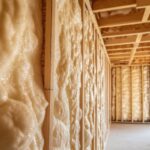Congratulations! You’ve decided to embark on the exciting journey of building your own home. While it can be daunting for first-timers, with careful planning and execution, you can turn your dream house into a reality. This guide will equip you with the essential steps to navigate the home construction process, ensuring a smooth and successful build.
Define Your Vision and Budget
Before diving headfirst, take a step back and solidify your vision. Envision the layout, functionality and overall style of your dream home. Pinterest boards, magazines and architectural websites are excellent resources for inspiration. Consider the number of bedrooms and bathrooms you need, the desired square footage and any specific features you can’t live without.
Here’s where budgeting comes in. Research average construction costs in your area and factor in the cost of the land, materials, labor and permits. Be realistic about your financial limitations and prioritize essential features. For more information on construction costs, consider consulting with local builders or realtors.
Assemble Your Team
Building a home is a collaborative effort. Here are the key players you’ll need on your team:
- Architect/Draftsperson: An architect will translate your vision into detailed blueprints that comply with building codes. Alternatively, a draftsperson can translate existing plans or modify pre-designed ones to suit your needs and budget.
- General Contractor: The general contractor oversees the entire construction process, hiring and managing subcontractors for various aspects like plumbing, electrical and roofing. They’ll also handle acquiring permits and ensuring the project stays on schedule and within budget.
- Engineer (Optional): For complex projects or those requiring specific structural considerations, such as expansive layouts or environmentally sensitive locations, an engineer can provide additional expertise and ensure the structural integrity of your home.
Secure the Land
Once you have a clearer picture of your desired home size and style, it’s time to find the perfect plot. Consider factors like location, accessibility to utilities (water, sewer, electricity) and proximity to essential amenities like schools, shops and healthcare.
Ensure the property zoning allows for residential construction and research any existing restrictions or covenants that may dictate aspects of your home’s design or exterior appearance.
Finalize Your Plans and Permits
Work closely with your architect or draftsperson to finalize the blueprints. These plans will detail the house’s layout, dimensions, materials and specifications.
Once finalized, submit the plans to the local building department for permit approval. This process can take some time, so factor it into your overall timeline and budget for any potential permit fees.
Choosing a Builder
Interview several qualified general contractors. Ask for references, check their licenses and insurance, and request detailed proposals outlining the project timeline, budget breakdown and materials to be used.
Ensure open communication and a clear understanding of expectations from the start. Don’t be afraid to ask questions and get clarifications on anything in the proposal you don’t understand.
Construction Time
With permits secured and a signed contract, construction can commence. The general contractor will manage the project, keeping you informed of progress through regular meetings and site visits.
During these visits, don’t hesitate to ask questions or raise any concerns you may have. The earlier you address any potential issues, the smoother the construction process will flow.
Inspections and Completion
Throughout the construction process, various inspections will be conducted by building department officials to verify building code compliance.
These inspections typically focus on electrical work, plumbing, structural integrity and fire safety. Once final inspections are passed, you can finally celebrate the completion of your dream home!
Remember: Building a home is a journey, not a sprint. Be prepared for unexpected delays or changes in plans. Maintain clear communication with your builder and remain adaptable. Having a contingency fund built into your budget can also help manage unforeseen circumstances.
This guide provides a foundational framework for planning and executing your home construction project. For more in-depth information on specific aspects of the process, consider consulting with professionals like architects, builders and real estate agents. With thorough planning, a dedicated team by your side and a touch of flexibility, you can transform your vision into a beautiful and functional home for years to come.















